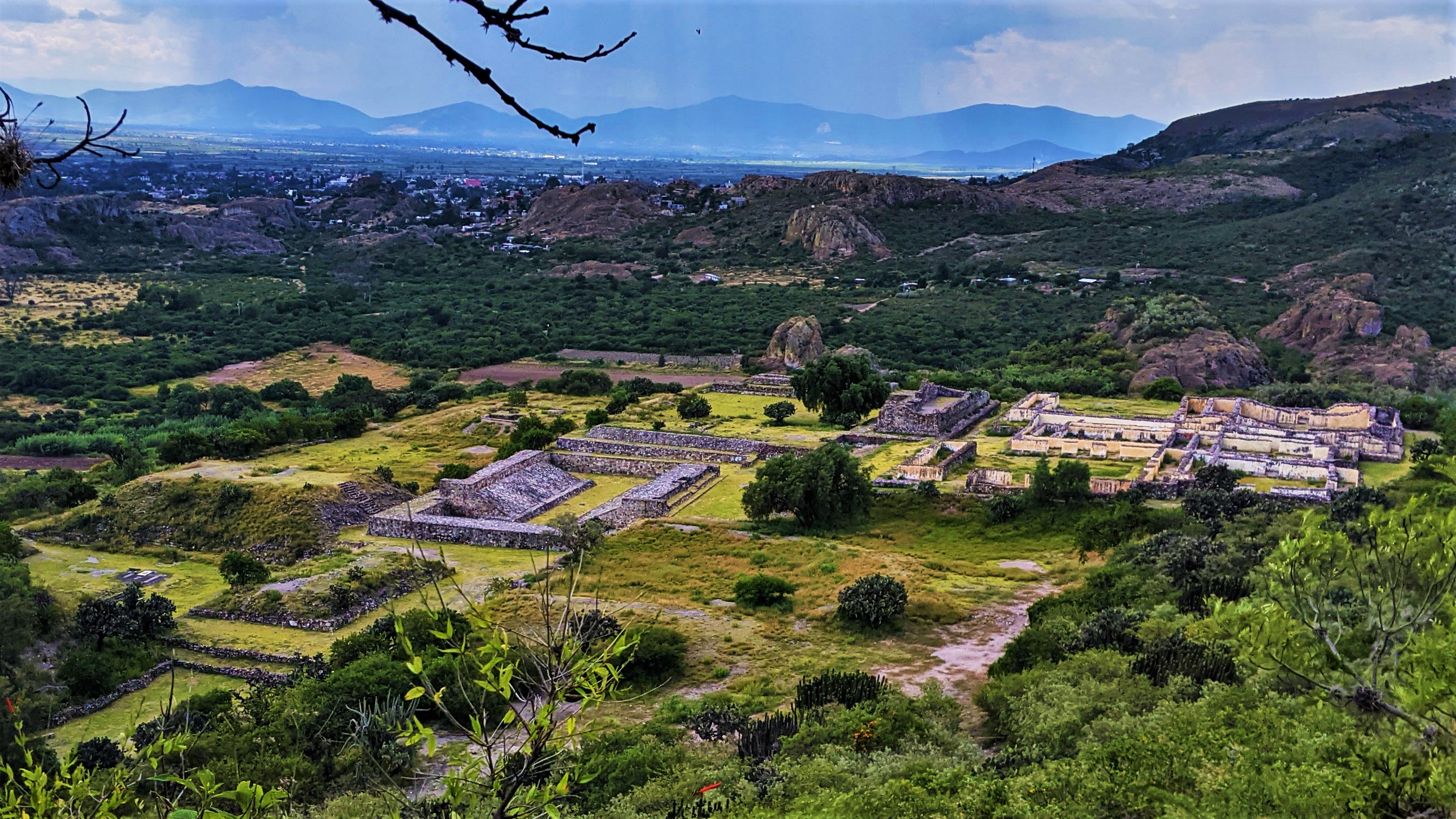
The Oaxaca Valley was settled by the Zapotec around 900-1000 BC and over the centuries developed a hierarchical society governed by elites. While the valley was relatively isolated, the Zapotec did have contacts with other Mesoamerican peoples. By the time the Spanish arrived in the 16th century, the Mixtec had migrated into the area. The mixed Zapotec state had a population of more than 500,000. They had developed and used sophisticated construction techniques, a writing system, two calendar systems, and sophisticated systems of agricultural cultivation.
The second most important city, after Monte Alban, was Mitla, which has been inhabited at least since the Classic Period (100-650 CE) and perhaps from as early as 900 BCE. It began as a fortified village on the outer edge of the valley and later became the main religious center of the Zapotec. The city reached its height and largest size after 750 AD when Monte Alban was abandoned.
Mitla is one of the pre-Columbian sites that express the Mesoamerican belief that death was the most consequential part of life after birth. It was built as a gateway between the world of the living and the world of the dead.[9] Nobles buried at Mitla were believed to be destined to become “cloud people,” who would intercede on behalf of the population below.

This is a classic tomb at Mitla that forms a semi burial chamber.
Mitla was still occupied and functioning as the main religious center when the Spanish explorers and military expeditions arrived in the 1520s and later. The high priest resided at Mitla and the Spanish likened him to the pope of the Catholic Church.
In 1553 Oaxacan Archbishop ordered the destruction of the Mitlan site. As the site had long held great political and religious significance for the area, he wanted to dissolve its power. Spanish-directed forces attacked the buildings, dismantling and sacking them, with few buildings spared. Later, Spanish clergy lived in some of the rooms of the sacred site, to displace the Zapotec who had been there before. Also, the stone blocks and remains were used as building materials for Spanish churches, including the Church of San Pablo, which was constructed on top of part of the ruins. The north side of the Cathedral of Oaxaca incorporates design features from Mitla to symbolize that the old culture was superseded by the new religious order.
Make sure you SUBSCRIBE to my channel and hit the BELL icon on YouTube, because I am putting together travel videos about our entire road trip through Mexico and this will be featured in the fourth Mexican travel video we are calling Pre-Columbian & Missionaries. It will have lots of info plus be lots of fun as you watch Lily and I interact around Mexico!!!!
In the mean time you can click the link to watch the first week in Mexico called Beaches & Islands, which features from Cancun to Playa del Carmen. Make sure you FOLLOW me on your preferred social media platform ( Instagram, TikTok, YouTube, Facebook, and Twitter) so you do not miss one bit of our travels through Lily’s country of Mexico.

